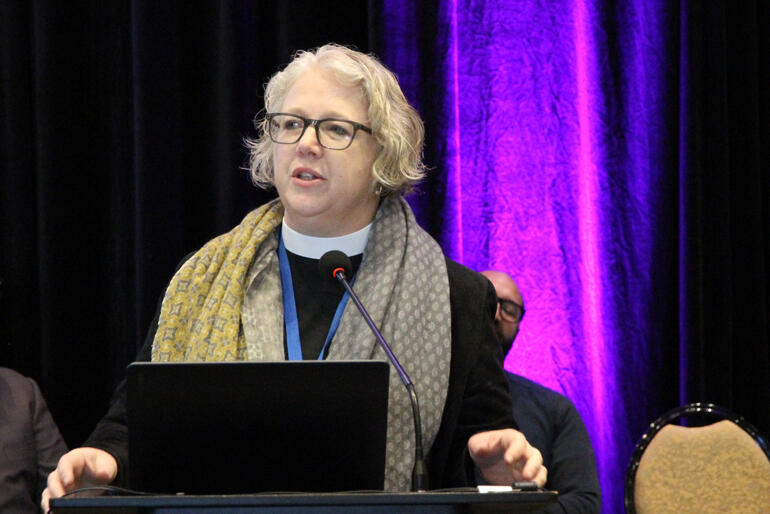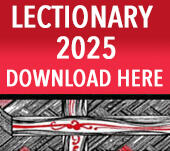
The General Synod of the Anglican Church in Aotearoa, New Zealand and Polynesia passed a collection of minor changes to its laws, lectionary and liturgical texts at its meeting in Nelson City last week.
Bill#1 moved by Waikato -Taranaki delegate Rev Peter Bargh updated the official name of this Church’s library and archives to ‘Te Puna Atuatanga -The John Kinder Theological Library’ in the canon governing its oversight. Te Puna Atuatanga can be translated as a Spring or Well of Theology, with Puna denoting source, spring, or well and Atuatanga speaking to God's nature, identity and activity.
Bill#2 moved by Polynesia delegate and Common Life Liturgical Commissioner Rev Sione Ulu’ilakepa made changes to the naming of Sundays in ‘A New Zealand Prayer Book He Karakia Mihinare o Aotearoa’ and changed the observance of St Matthias the Apostle to occur solely on the 14 May, alongside Ngakuku, Missionary in Mataatua.
Bill#6 moved by Auckland delegate Rev Ivica Gregurec enabled the three Tikanga Council for Ecumenism to nominate one or more people with interfaith expertise to be appointed members of the Council by General Synod Standing Committee. Rev Ivica explained how Interfaith expertise (also known as interreligious expertise) has been identified as a growing requirement for building positive relations between our Church and people from the diverse religious communities living in Aotearoa, New Zealand and Polynesia.
Bill#10 moved by Bishop of Tai Tokerau and former Common Life Liturgical Commissioner Rt Rev Te Kitohi Pikaahu shifted prayers for All Saints’ Day into the “red pages,” the Eucharistic liturgies portion of ‘A New Zealand Prayer Book He Karakia Mihinare o Aotearoa’ in the section titled ‘Seasonal Sentences, Prayers and Blessings for use after Communion’.
Bill#11 moved by Auckland delegate Rev Clare Barrie added four new English medium glorias to the Daily Prayers section of ‘A New Zealand Prayer Book He Karakia Mihinare o Aotearoa’. These glorias add to the one English and three Māori medium Trinitarian prayers already provided in the 1989 Prayer Book. These Trinitarian, gender neutral glorias come from ‘Celebrating Common Prayer’ and the ‘Order of St Helena Breviary’, the latter a prayer book that aims to counter the predominance of masculine imagery in Christian prayer with more inclusive and expansive terms for God and humanity. Two examples of the newly approved gloria prayers are;
“Glory to the holy and undivided Trinity, one God: as it was in the beginning, is now and will be forever. Amen.”
“Glory to God, Source of all being, Eternal Word, and Holy Spirit; as it was in the beginning, is now, and shall be forever. Amen.”
Bill#13 moved by Tairāwhiti delegate and General Church Trustee Selwyn Parata enables the General Church Trust Board to appoint two additional Trustees to its Board who bring specialised expertise in trusts and financial management to help guide the Board in its decisions.
Motion#4 moved by Archbishop Don Tamihere reappointed Keringawai Evans and Selwyn Parata to the St Stephens and Queen Victoria Schools Trust Board.
Motion#8 moved by Rev Peter Bargh amended Standing Resolution 9 on recording statistical data to ensure that Dioceses and Pīhopatanga are requested to return their annual statistical returns to Tuia -The General Synod Office in both digital and hard copy each year.
Motion#9 moved by Bishop of Christchurch Rt Rev Peter Carrell removed the current foreword, preface and introduction to ‘A New Zealand Prayer Book He Karakia Mihinare o Aotearoa’ and requested that the Common Life Liturgical Commission arrange for an updated introduction to be produced that will replace them in future editions. That introduction will provide a new summary of the Prayer Book’s kaupapa, history and composition.

















Comments
Log in or create a user account to comment.